 Weird Stuff
Weird Stuff  Weird Stuff
Weird Stuff  Mysteries
Mysteries 10 Tragic Disappearances and Deaths in Joshua Tree National Park
 History
History 10 Ways Childhood Really Sucked in the Old West
 Music
Music 10 Name Origins of Famous Bands from the 1990s
 Religion
Religion 10 Biggest Turnarounds by the Catholic Church
 Weird Stuff
Weird Stuff 10 Unbelievable Times Laws Had Unintended Consequences
 Humans
Humans Ten Historic Women Who Deserve Way More Credit Than They Got
 Movies and TV
Movies and TV 10 Films That Spawned Major Lawsuits
 History
History Ten Times Towns Were Wiped Off the Face of the Earth
 Creepy
Creepy 10 of the Most Disturbingly Haunted Public Houses in the UK
 Weird Stuff
Weird Stuff 10 Niche Subcultures That Are More Popular Than You Might Think
 Mysteries
Mysteries 10 Tragic Disappearances and Deaths in Joshua Tree National Park
 History
History 10 Ways Childhood Really Sucked in the Old West
Who's Behind Listverse?

Jamie Frater
Head Editor
Jamie founded Listverse due to an insatiable desire to share fascinating, obscure, and bizarre facts. He has been a guest speaker on numerous national radio and television stations and is a five time published author.
More About Us Music
Music 10 Name Origins of Famous Bands from the 1990s
 Religion
Religion 10 Biggest Turnarounds by the Catholic Church
 Weird Stuff
Weird Stuff 10 Unbelievable Times Laws Had Unintended Consequences
 Humans
Humans Ten Historic Women Who Deserve Way More Credit Than They Got
 Movies and TV
Movies and TV 10 Films That Spawned Major Lawsuits
 History
History Ten Times Towns Were Wiped Off the Face of the Earth
 Creepy
Creepy 10 of the Most Disturbingly Haunted Public Houses in the UK
10 Ridiculously Elaborate Scientific Studies No One Asked For
Often, scientific studies are meant to advance our understanding of the world, providing us with irreplaceable tools to solve our daily problems. Occasionally, though, science goes beyond the necessary and enters the realm of the ridiculous just because the scientists didn’t have anything better to do that day.
Ever hear a child ask stupid questions like: “What if birds pooped lying down?” Although most of us would laugh and ignore those questions, some scientists make a serious face and say, “Well, let’s find out.”
To know what we’re talking about, here are some of the most hilariously unnecessary scientific studies ever conducted.
10 How Different Are Apples And Oranges Really?
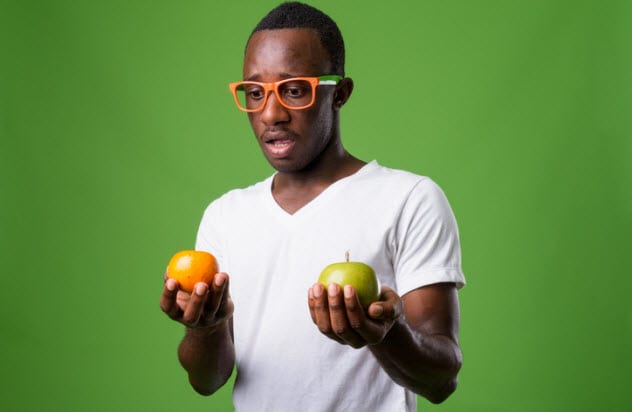
We’ve been comfortably using the supposed differences between apples and oranges in arguments at parties ever since someone came up with the simile ” . . . like comparing apples and oranges.” It makes sense, too, as they look and taste quite different and it serves the purpose of the argument well. That clearly didn’t sit well with surgeon James E. Barone, who decided to take a closer look at the whole thing.
As it turns out, according to an elaborate paper that was presented at the Connecticut Society of American Board Surgeons, apples and oranges are actually quite similar. After carrying out experiments—presumably hunched over their work desks for hours and looking all serious—they concluded that the only difference between apples and oranges was in their color and type of seeds. Otherwise, they might as well be the same fruit.
Thanks to them, we’re back to having no phrase to compare two seemingly unrelated things in casual conversations.[1]
9 How Do Shrimps Fare Walking On A Treadmill?
What do you think when you look at shrimp?
For the foodies, it may be all about their texture and what they could be paired with. For the casual observer, they may look like just another one of the countless marine species that have no significant impact on our lives. For the scientists who carried out this study, though, the first question that came to their minds was: “So what if we put them on a treadmill?”
Under the guise of studying the effects of stress on marine life when they were only trying to decisively answer a ridiculous question by one of their kids, a couple of scientists injected some shrimp with bacterial infections and put them on a tiny underwater treadmill to see what would happen.
In a result that would not surprise—or even interest—anyone anywhere whatsoever, they concluded that uninfected shrimp performed better than their infected counterparts. The best (or worst) part? The study got $682,570 of taxpayer funding from the National Science Foundation.[2]
8 Is It Better To Smash An Empty Or Full Beer Bottle On Someone’s Head?
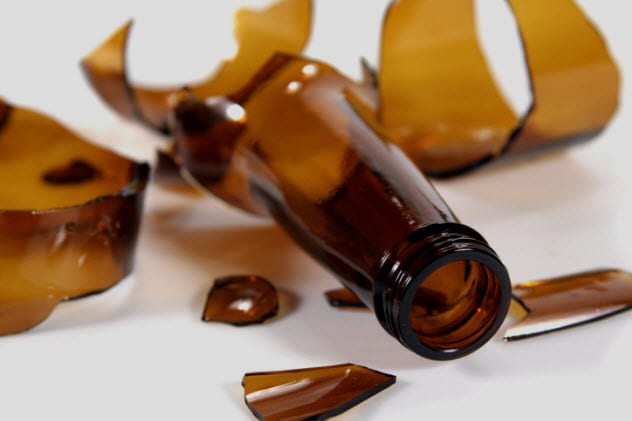
Anyone who has ever been in a bar fight would remember the things that were going through his head at the time: “What’s happening?” “Am I bleeding?” “How will I get home?”
These are probably the most common things, though we can surely say that the science of what kind of beer bottles you should use to smash someone’s head wasn’t one of them. For the scientists who went forward and conducted that exact study, however, it was a question worth answering.
They took full as well as empty half-liter beer bottles and conducted a stress test on them in a drop tower, which tells us that they really prepared for this. As they found out, empty beer bottles broke at 40 J of energy and full ones at 30 J.
If that sounds like a significant difference, it’s really not. Both of those are enough to fracture the human skull, something that bar brawlers have known since bars (or beer bottles) were invented.[3]
7 How To Pee To Avoid Splash Back?
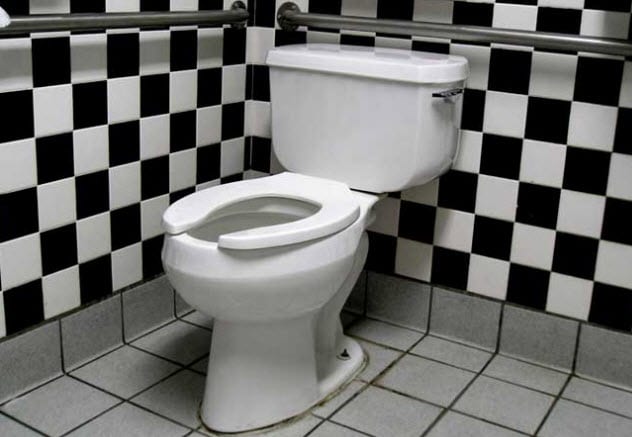
For all the men out there, peeing in unfamiliar washrooms has always been a sort of gamble. One of the reasons is the splash-back mechanics of the pot. You never know how much of it you’re going to get on your shoes and pants, and we’ve all really made peace with the fact.
Is it worth spending resources and conducting a full-fledged scientific study on? No, most men would say—but not these three scientists who believe it’s a problem worth investigating.
In a study conducted at Brigham Young University in the appropriately named Splash Lab, they 3-D-printed a urethra and did all kinds of elaborate experiments to determine exactly what causes the worst kind of splash back. And by “elaborate,” we mean “elaborate”—with a team of scientists and a full-fledged lab setup.[4]
They determined that the size of the pee droplets or the speed with which you pee doesn’t matter at all. Rather, it’s about the angle, even if most of us would have figured that out on one of our drunk nights without any lab equipment whatsoever.
6 What’s The Mathematical Formula For Perfect Cheese On Toast?
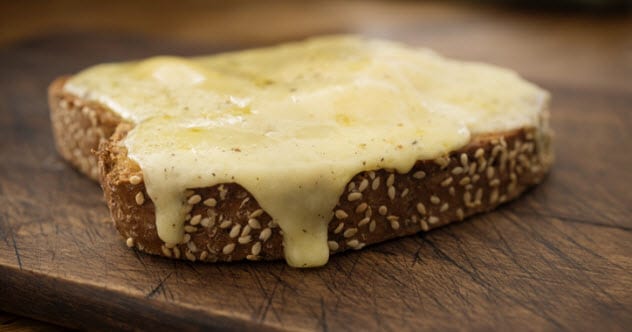
Putting cheese on toast seems like a perfectly straightforward thing to do. You just take the cheese and the toast and . . . put the cheese on top of the toast.
Sure, some people may want it to be perfect and may go to some lengths to incorporate advanced cheese-putting techniques into their breakfast routine. But by and large, people don’t seem to, say, need a mathematical formula to do it.
The Royal Society of Chemistry along with the British Cheese Board vehemently disagrees, though. They actually have a mathematical formula—complete with complex variables and units of measurement that have no business being on a formula for cheese on toast—to perfectly do it.[5]
They tweaked the different variables—like the temperature and texture of the cheese—under strict lab conditions to come up with it, too, though we still maintain that there was absolutely no need for them to do so in the first place.
5 How To Walk Without Spilling Your Coffee?

Anyone who has ever had to get up from his desk and walk somewhere with a cup of coffee in one hand knows the problems that come with that decision. Unless you’re gifted at the art of balancing—or at least have spent considerable time practicing exactly that—there’s a good chance that you’ll spill some of it.
And for most of us, that’s a trade-off we’re willing to make as the more time that the coffee is in your immediate reach, the more coffee you can drink because coffee is awesome. Is the problem big enough for a scientific study, though? We don’t think so.
However, that’s not true for the scientists who have spent quite a bit of time trying to understand the physics behind coffee spills while walking. Using complex phrases like “fluid-structure interaction of the coffee cup,” “resonance region,” and “maximum spillage,” the study took an in-depth look into how we can optimize our walking-with-coffee experiences.
They concluded—totally without irony and presumably with straight faces—that one of the best ways to walk with coffee is to walk backward, even if you’d look stupid doing it and the spilling thing really is not that big of a problem anyway. They also suggest a clawlike hold of the cup to further improve the results.[6]
4 Take A Photo Without Anyone Blinking?

If you’re the designated photographer for any family gathering (it’s not because you’re ugly, we swear; you’re just very good at it), you’ll be familiar with the problem of that one person who always ends up blinking in the final image, no matter what you do.
It’s not always the same person, either. It can be anyone, and they probably didn’t even do it consciously (unless some evil person is actually timing their blinks with the click for the kicks).
What’s really a nonissue for most casual photographers, however, is something worth studying for CSIRO physicist Dr. Piers Barnes. He employed probability and calculus to come up with an equation to determine exactly how many photographs you’d need to take (with a 99 percent confidence level) to ensure that you get one without anybody blinking.
He determined that the greater the number of people in the photo, the higher the chances of unintentional blinks. If the number of people is in the mid-range, say somewhere around 20, you’d have to take about six photographs if the light is good and about 10 if it’s not.[7]
3 How Does Sitting For A Long Time Affect A Cow’s Ability To Stand Up?

We all know that cows are difficult to understand. You’re never sure what they want from just the expressions on their faces as they’re spectacularly devoid of any show of emotion. However, we can’t complain because they provide us with food and milk. They also laze about for a long time depending on how leisurely they’re feeling that day because, let’s face it, they’re cows and that’s what they do.
For the scientists who conducted this study, which was published in Applied Animal Behavior Science, there was evidently some scientific data to be collected among all the sitting down and standing up that the cows were doing, which the researchers set out to find. Data like “are cows that have been sitting down for a longer time more likely to stand up?”[8]
After recording and studying tens of thousands of instances of cows lying down with specially installed sensors, the scientists concluded that, yes, the longer a cow sits, the more likely it is to stand back up.
2 How Uncomfortable Is Wet Underwear Really?

If you’ve ever found yourself in the rain or jumped into the water without a change of clothes at hand, you’d know the trouble you’re in—wet undergarments. Despite our presumably best efforts to advance underwear tech, not much progress has been made on how to minimize that discomfort. It’s bad, but then it’s also something we learn to live with.
Except for these scientists, who were just not buying it. Does it really make you uncomfortable?
To get to the bottom of it, they set up a study of their own—complete with test subjects and verifiable scientific research. They took eight men, put them in wet underwear, and monitored their skin and rectal temperatures as well as weight loss during a 60-minute period. This included details like the rate of shivering and visible discomfort.
In a result that would not be called surprising in any way, they concluded that, yes, wet underwear does make you colder and more uncomfortable and the thickness of the material played a big role in the results.[9]
1 What’s Up With Navel Fluff?
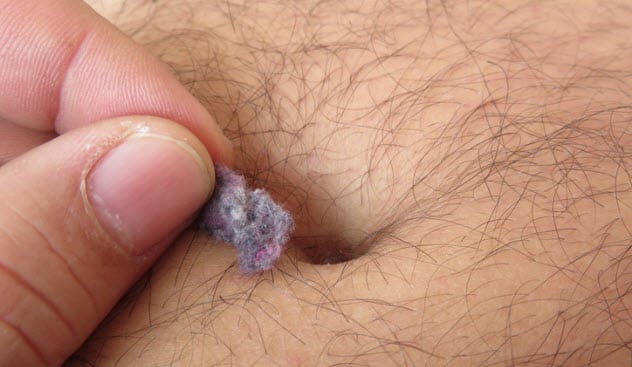
The belly button serves no discernible purpose other than being part of the overall look of the body that we’d all look pretty creepy without. The only times we give it any attention are the few days we decide it needs to be cleaned out. Other than that, it’s sort of just there in the background.
If we asked you the exact nature of the fluff that accumulates there, most of us would reply with “probably dirt, who cares?” Though that’s not enough for this scientist from Vienna University of Technology, who spent over four years studying the precise contents of navel lint.
From 2005 to 2009, Georg Steinhauser collected 503 pieces of his own navel fluff and carefully studied it for clues as to what it could be. You can say that it turned into an obsession at some point as he also started asking other people about their navel fluff.
Hopefully, he added to his readings—or maybe he just weirded some people out for no reason. He concluded that the lint was actually directed by the type of hair found in the belly button and mostly came from the shirt or T-shirt he was wearing that day.[10]
Himanshu can be found shouting obscenities at strangers on Twitter @RudeRidingRomeo or making amateur drawings on Instagram @anartism_. He has written for Screen Rant, Forbes, Cracked, Modern Rogue, and Arre. Pay him money for writing stuff for you here: [email protected]
Read more crazy results from even wackier scientific studies on 10 Scientific Studies That Answered Bizarrely Specific Questions and 10 Ridiculously Unnecessary Scientific Studies.








